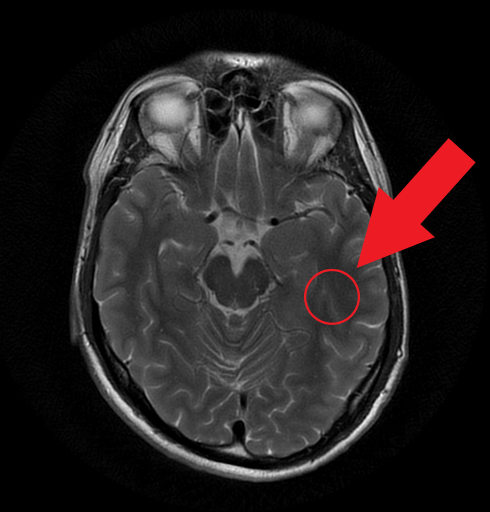LOS ANGELES—The International Mindfulness Foundation (IMF) today announced the discovery of a fifth noble truth, overturning the ancient Buddhist belief that there are only four. Speaking at a press conference at UCLA, IMF president Hugh Briss reported that researchers in the US and UK, using the latest quantum MRI technology, had scanned the brains of more than 100 select meditators to locate the fifth center of noble-truth activity in a part of the striatum normally associated with lust and desire, an area previous researchers had overlooked.
“Not only did our researchers at UCLA and Oxford discover this new center of activity,” Briss said, “they were also, after consultation with certified mindfulness experts, able to correctly identify the true meaning of all five centers of noble-truth activity in the brain.”

“We can now say with absolute scientific certainty that suffering, the first noble truth, is an inability to accept life as it is, while the second noble truth, the cause of suffering, is bad social conditioning. Research strongly suggests that the third noble truth is that suffering can’t be ended but it can be managed, while the fourth noble truth, the path for the management of suffering, corresponds to learning an attitude of mindful acceptance.”
“The newly discovered fifth noble truth is that all other noble truths are subject to change without notice,” added Briss. “Obviously, this last truth is the noblest of the five.”
Briss went on to say that the researchers had also ascertained that the fourth noble truth contained only three factors—wisdom, compassion, and mindfulness—rather than the eight previously reported.
Prof. Reed Uctionist, chairman of the department of neurophysics at UCLA, then explained the researchers’ methodology in more detail. After his presentation, Uctionist was asked why the researchers considered their data so reliable as to overturn two millennia of previous findings.
“First off,” he replied, “we studied only meditators with the most unimpeachable academic certification: graduates from mindfulness centers at UCLA and Oxford. Second, we used quantum sensors to probe the inner workings of the brain. Earlier ‘research,’ to use the term loosely, was based on introspection of consciousness while sitting under trees. Research protocols were ad hoc and haphazard, with no experimental controls and no consideration of environmental impacts at all.
“Actually, it’s amazing that earlier meditators came as close to the actual noble truths as they did. The human mind is totally unreliable as an observer and interpreter of what it regards as its inner states, whereas we now have quantum sensors that can collect much more accurate data in these areas by measuring actual brain activity on the subatomic level.”
When questioned what it was that interpreted this data if not human minds, Uctionist started for a moment and then froze. After 30 seconds of whirring and clicking audible only to those sitting in the front row of the auditorium, he neatly folded in on himself, shrank to an infinitesimal point, and disappeared.
Briss then announced that, due to technical difficulties, the press conference was adjourned.
More from P. B. Law: Bodhisattva In The Rye | The Art of Undermining your Significant Other | Goldman, BP, Claim Mahayana Rights | Three Mindful Tips for Valentine’s Day and Beyond
Thank you for subscribing to Tricycle! As a nonprofit, we depend on readers like you to keep Buddhist teachings and practices widely available.